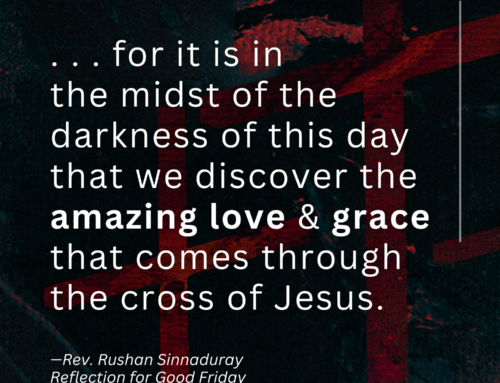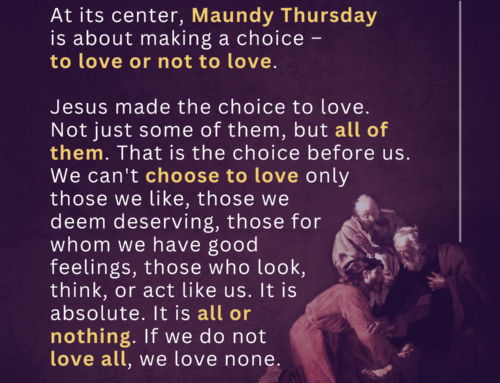Saturday
- Where have we failed to live in ways that reflect God’s love never fails?
- Where can we grow as a church to more fully embody this message? In our lives?
God we lament and repent of our riches, comfort, privilege, and status. We ask that your Spirit will transform our hearts to be more like yours. Amen. (prayer adapted from Luke 6:24-26)
The Kingdom is Yours: https://www.youtube.com/watch?v=jUQt7htNwO0
Love Never Faileth
I finally got out of quarantine and had a chance to tour the campus of Central Union Church this past week. As I have talked with various church members, many have told me about the beauty of the church building and the ways that the architecture of the sanctuary creates a sacred place to worship. When I first got here, I could not believe the size of the building and when I looked into the sanctuary, I saw how detailed and grand it was in its symmetry, high ceilings, and many pews ready for many people. After visiting the campus I can now see why meeting to worship together at 1660 S. Beretania St. is something that many miss!
In 1924 Albert W. Palmer, a Minister of Central Union, preached a sermon called “The Symbolism of Our New Church” in which he names how the details of the sanctuary point to aspects of God. In it he says that a church building can become “a symbol of the deeper truth and nobler impulses which lie behind it.” It is clear that for many of us Central Union has become a symbol of church and worship in this community. Although our Sanctuary, Chapel, and Parish Hall are sacred places to worship, they are not the only sacred places. It is important to remember the wisdom of Minister Palmer in this season: the building of the church is a symbol of God’s presence among us, but we are the church.
It says in Acts, “God dwelleth not in temples made by hands,” and again in First Corinthians, “Ye are a temple of God.” It is not the buildings that make the city but the people in it and no church can serve apart from the men and women who gather beneath its over-arching roof. Not only the church must stand in friendly welcome in its garden in the midst of the city – its members must have the friendly heart as well. It is not enough to write “Love Never Faileth” upon its walls – we who worship here must believe it and practice it. Even the uplifted cross may be mute to men who do not find its power changing the lives of those who look upon it.
-June 1, 1924 Albert W. Palmer, The Symbolism of our New Church sermon
The verse that Palmer is referencing here is 1 Corinthians 3:16, “Do you not know that you are God’s temple and that God’s Spirit dwells in you?” In this verse the “you” that God’s Spirit dwells in is ὑμῖν, “hymin”, in Greek which is a plural form of the word “you”. The church is us, the community of believers. In his sermon Palmer reminded the congregation that they all were the church, not the building.
Today the pandemic and stay at home order is giving us a pause, a distance from our building to consider carefully again how we, the church, live in ways that show that God’s “Love Never Faileth”. Those words “Love Never Faileth” above the cross on the wall are large and prominent in our sanctuary. This is such a beautiful truth to have etched into our building. In this season, do we believe that God’s love has not failed us? Our pre-covid ways of living, worshipping, working, and gathering fail us now. In addition this pandemic has made more visible the ways that our workings as a society have been failing us as humanity in access to healthcare, food, housing, and education. In a time when it feels like things are failing all around us, what does it look like for us to live in ways that show that God’s love never faileth?
To address this question and to close this devotional, I invite the wisdom of Latin American theologian Jon Sobrino, who writes of where he experiences God in catastrophe. In 2001 there were a series of earthquakes in El Salvador that completely devastated the country. In Sobrino’s reflections upon this earthquake he writes that unless Christians “live the reality of the earthquake, we are turning away from the cross of the crucified peoples.”[1] He talks about the “saintliness of suffering” in solidarity with others as a way that we as Christians bear witness to the love of Christ. Sobrino is not encouraging us to suffer, but rather to know the reality of those suffering and to live in the now of this reality with them. Jesus was one that sat with and healed those who suffered the most. Today that may be parents who are figuring out how to work and care for their kids on adjusted schedules, those who have lost jobs indefinitely, those incarcerated in unsafe and unsanitary conditions, those without safe places to live, and sex workers and survivors. We as a church are called to live in ways that reflect “Love Never Faileth” and the image of the cross by being with those who are suffering.
For some of us these words and images in the center of the sanctuary bring us solace, knowing that Jesus knows and sees us in our pain, fear, and suffering. For some of us these words and images challenge us to consider: what does it look like to live in ways that show God’s love never fails those who suffer the most? Perhaps the “uplifted cross may be mute” to those who look upon it because we have muted the message that God is a God who suffered on the cross in solidarity with those who suffer. Though things in our world may break and fail, God’s “Love Never Faileth”.
[1] Jon Sobrino, Where is God? Earthquake, Terrorism, Barbarity, and Hope, trans. Margaret Wilde. (Maryknoll: Orbis, 2004).






